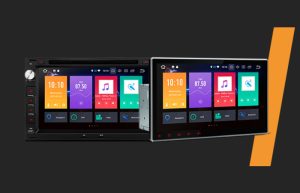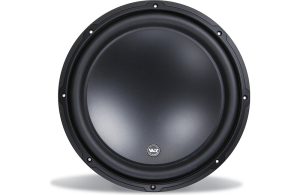In today’s fast-paced world, having a reliable and high-quality car stereo is essential for an enjoyable driving experience. While many vehicles come equipped with factory-installed stereos, they often lack the advanced features and audio quality that aftermarket stereos offer. Upgrading to an aftermarket stereo can transform your car’s audio system and provide you with a range of benefits.
What aftermarket stereo fits my car? When it comes to choosing the right aftermarket stereo for your car, there are several factors to consider. Compatibility with your car’s make and model, size and dimensions, connectivity options, audio playback formats, and budget are all crucial aspects to evaluate. By understanding these factors and conducting thorough research, you can make an informed decision and find the perfect aftermarket stereo that fits your car like a glove.
In this comprehensive guide, we will delve into the world of aftermarket car stereos and provide you with valuable insights and tips to make your selection process easier. Whether you’re a music enthusiast, audiophile, or simply looking to enhance your driving experience, this guide will help you navigate through the vast array of options and choose the ideal aftermarket stereo for your car. Get ready to embark on a journey of improved audio quality, advanced connectivity features, and seamless integration with your vehicle. Let’s dive in!
Contents
Understanding the Benefits of Upgrading Your Car Stereo
Upgrading your car stereo to an aftermarket option can offer a multitude of benefits that go beyond what factory-installed stereos can provide. Key advantages to consider:
- Enhanced Audio Quality: Factory-installed stereos often have limited power output and subpar speakers, resulting in mediocre sound quality. Aftermarket stereos, on the other hand, offer a wide range of audio enhancements such as built-in amplifiers, equalizers, and improved speaker systems. These features can significantly enhance the clarity, depth, and overall audio experience in your car, allowing you to enjoy your favorite music with greater detail and precision.
- Advanced Connectivity Features: Aftermarket stereos are designed with modern connectivity options to keep up with the ever-evolving technology. Bluetooth connectivity enables seamless wireless audio streaming, allowing you to play music directly from your smartphone or other compatible devices. USB ports enable convenient charging and playback of music from USB drives, while auxiliary inputs provide compatibility with various audio sources. Some aftermarket stereos even support advanced features like Apple CarPlay or Android Auto, offering seamless integration with your smartphone’s apps and functionalities.
- Access to a Wider Range of Audio Sources: Unlike factory stereos that often limit you to standard AM/FM radio or CDs, aftermarket stereos provide a broader range of audio sources. With options like satellite radio, internet radio streaming services, and support for various audio formats (MP3, FLAC, etc.), you can enjoy a diverse selection of music tailored to your preferences. This expanded range of audio sources ensures that you never run out of options and can always find something to suit your mood and taste.
- Upgrading Outdated Technology: If your car’s factory stereo is outdated and lacks modern features, upgrading to an aftermarket stereo can breathe new life into your audio system. You can enjoy the benefits of a touchscreen display, intuitive user interfaces, voice control capabilities, and integration with other car features like steering wheel controls or backup cameras. These technological advancements not only improve convenience but also add a touch of modernity to your car’s interior.
Factors to Consider When Choosing an Aftermarket Stereo
When selecting an aftermarket stereo for your car, it’s crucial to consider several key factors to ensure compatibility, functionality, and a seamless integration with your vehicle. Essential aspects to keep in mind:
- Compatibility with Your Car’s Make and Model: Not all aftermarket stereos are designed to fit every car. It’s essential to check the compatibility of the stereo with your specific car’s make and model. Consider factors such as the dashboard layout, available space, and wiring connections.
- Head Unit Size and Dimensions: Aftermarket stereos come in various sizes, including single-DIN and double-DIN units. Single-DIN stereos are smaller and typically measure about 2 inches in height, while double-DIN units are twice the height. Measure your car’s existing stereo slot to determine the appropriate size.
- Connectivity Options: Consider the connectivity features that are important to you. Bluetooth connectivity allows wireless audio streaming and hands-free calling, while USB ports enable direct connection and charging of compatible devices. AUX inputs provide flexibility to connect external devices, and some stereos support Wi-Fi or smartphone integration features like Apple CarPlay or Android Auto.
- Audio Playback Formats and Options: Different aftermarket stereos support various audio formats, such as MP3, WMA, FLAC, or AAC. If you have a preference for specific audio formats or plan to play high-resolution audio files, ensure that the stereo you select supports them.
- Built-in Amplifiers and Equalizers: Some aftermarket stereos come with built-in amplifiers and equalizers, allowing you to improve and fine-tune your car’s audio performance. Built-in amplifiers provide more power to the speakers, resulting in louder and clearer sound.
- User-Friendly Interface and Controls: A user-friendly interface and intuitive controls make operating the stereo easier and safer while driving. Look for features like touchscreen displays, responsive buttons, clear icons, and easy-to-navigate menus
- Integration with Existing Car Features: If you have existing car features like steering wheel controls, backup cameras, or vehicle information displays, check if the aftermarket stereo supports their integration. Compatibility with these features can preserve the convenience and functionality you already have in your car.
- Budget Considerations: Set a budget for your aftermarket stereo purchase. Stereos come in a wide range of prices, and setting a budget helps narrow down your options and prevents overspending.
Researching Compatible Aftermarket Stereos
Researching compatible aftermarket stereos is crucial to ensure a seamless integration and optimal performance in your car. Here are some effective methods to conduct your research:
- Manufacturer Websites: Start by visiting the websites of reputable car stereo manufacturers. Most manufacturers provide detailed product information, including compatibility with different car makes and models. Look for specific compatibility lists, guides, or tools that allow you to search for stereos suitable for your vehicle. Pay attention to dimensions, wiring requirements, and any additional accessories needed for installation.
- Online Retailers and Marketplaces: Explore online retailers and marketplaces that specialize in car audio equipment. These platforms often include filtering options to narrow down your search based on car make, model, and specific compatibility requirements. Read product descriptions, specifications, and customer reviews to gain insights into the compatibility and performance of different aftermarket stereos.
- Online Forums and Communities: Join online forums and communities dedicated to car audio enthusiasts. These platforms provide a wealth of knowledge and experience shared by passionate individuals. Start a thread or search existing discussions related to your car make and model. Engage with community members, ask questions, and seek recommendations for compatible aftermarket stereos. These enthusiasts can offer valuable insights based on their personal experiences and knowledge.
- Car Audio Experts and Installers: Consult with car audio professionals or visit local car audio shops and installation centers. These experts have extensive experience working with various car models and aftermarket stereos. They can provide personalized recommendations based on your specific car and preferences. Discuss your requirements, budget, and desired features to get expert advice on compatible aftermarket stereos that suit your needs.
Popular Aftermarket Stereo Brands and Models
When it comes to aftermarket car stereos, several brands have established themselves as leaders in the industry. Here are some popular aftermarket stereo brands and their notable models:
Pioneer: Pioneer is a well-known name in the car audio industry, renowned for its quality and innovative products. Their AVH-1300NEX model is a highly popular choice, featuring a 6.2-inch touchscreen display, Bluetooth connectivity, Apple CarPlay, and Android Auto compatibility.
Kenwood: Kenwood is another reputable brand offering a diverse lineup of aftermarket stereos. The Kenwood Excelon DDX9905S is a standout model, equipped with a 6.8-inch touchscreen, built-in Bluetooth, Apple CarPlay, Android Auto, and support for high-resolution audio formats. It boasts advanced audio features, multiple connectivity options, and seamless smartphone integration.
Sony: Sony is known for its cutting-edge audio technology, and the Sony XAV-AX5000 is a popular choice among car enthusiasts. With its 6.95-inch touchscreen display, Bluetooth connectivity, Apple CarPlay, Android Auto, and a sleek design, this model provides excellent audio quality and seamless smartphone integration.
Alpine: Alpine is renowned for its premium car audio solutions, and the Alpine ILX-W650 is a sought-after model. It features a 7-inch touchscreen, Bluetooth connectivity, Apple CarPlay, Android Auto, and compatibility with various audio formats. The ILX-W650 offers a user-friendly interface, excellent sound quality, and a slim design that fits well in different vehicles.
JVC: JVC offers a range of aftermarket stereos that combine performance and affordability. The JVC KW-M740BT is a popular model featuring a 6.8-inch touchscreen, Bluetooth connectivity, Apple CarPlay, Android Auto, and support for FLAC audio files. It offers a user-friendly interface, customization options, and seamless smartphone integration at a competitive price point.
These are just a few examples of popular aftermarket stereo brands and models available in the market. Each brand may offer a variety of models with different features, sizes, and price points.
Professional Installation vs. DIY: Making the Right Choice
When it comes to installing an aftermarket car stereo, you have two options: professional installation or the do-it-yourself (DIY) approach. Both options have their advantages and considerations. Let’s explore them:
Professional Installation:
- Expertise and Experience: Car audio professionals have the knowledge, skills, and experience to handle the complexities of aftermarket stereo installation.
- Time and Convenience: Professional installation saves you time and effort.
- Warranty and Support: Many reputable car audio shops offer warranties on their installation services.
- Complex Installations: In some cases, installations may involve additional modifications or integration with advanced car features like steering wheel controls, backup cameras, or vehicle information displays. Professional installers have the expertise to handle these complexities, ensuring proper integration and functionality.
DIY Installation:
- Cost Savings: DIY installation can save you money as you won’t have to pay for professional labor
- Learning Experience: Installing the stereo yourself can be a learning experience and give you a better understanding of your car’s audio system
- Personalization and Control: DIY installation gives you full control over the process. Considerations:
- Warranty and Risk: DIY installations may void the warranty on the stereo or your car.
- Compatibility Challenges: If your car has complex features, steering wheel controls, or integrated displays, professional installation can help ensure proper compatibility and integration
Professional installation offers expertise, convenience, and support, making it the ideal choice for complex installations or for those who prefer a hassle-free experience. DIY installation may be suitable for simpler setups and for individuals who enjoy the hands-on aspect and have the necessary knowledge and confidence. Assess your comfort level, the complexity of the installation, and your budget to make the right choice for a successful aftermarket stereo installation.
Conclusion:
Finding the perfect aftermarket stereo for your car requires careful consideration and research. By understanding your car’s compatibility, exploring different options, and weighing the benefits of professional installation, you can achieve a seamless and enjoyable audio upgrade. Enhance your driving experience with a new aftermarket stereo that fits your car like a charm. Happy listening!






